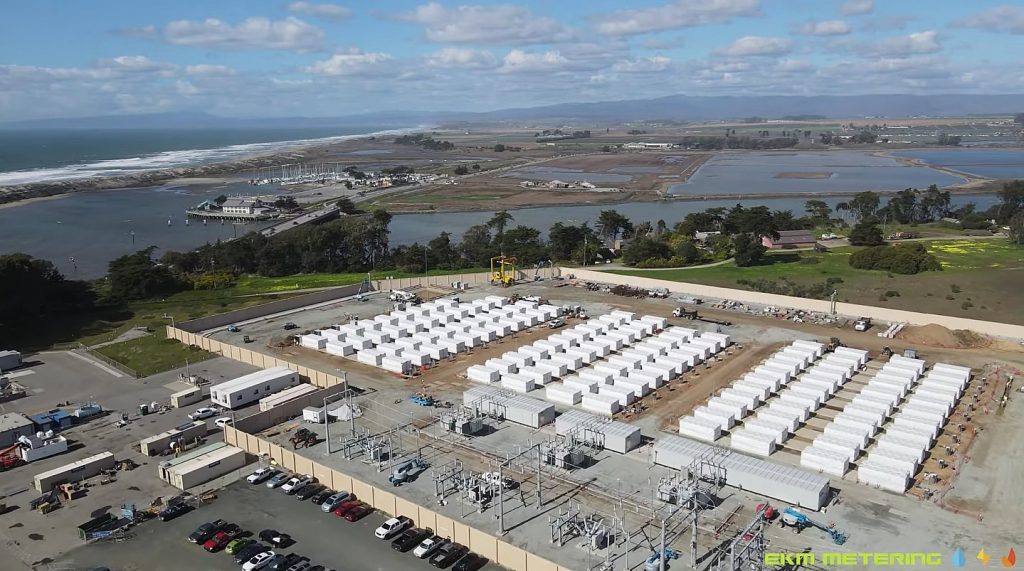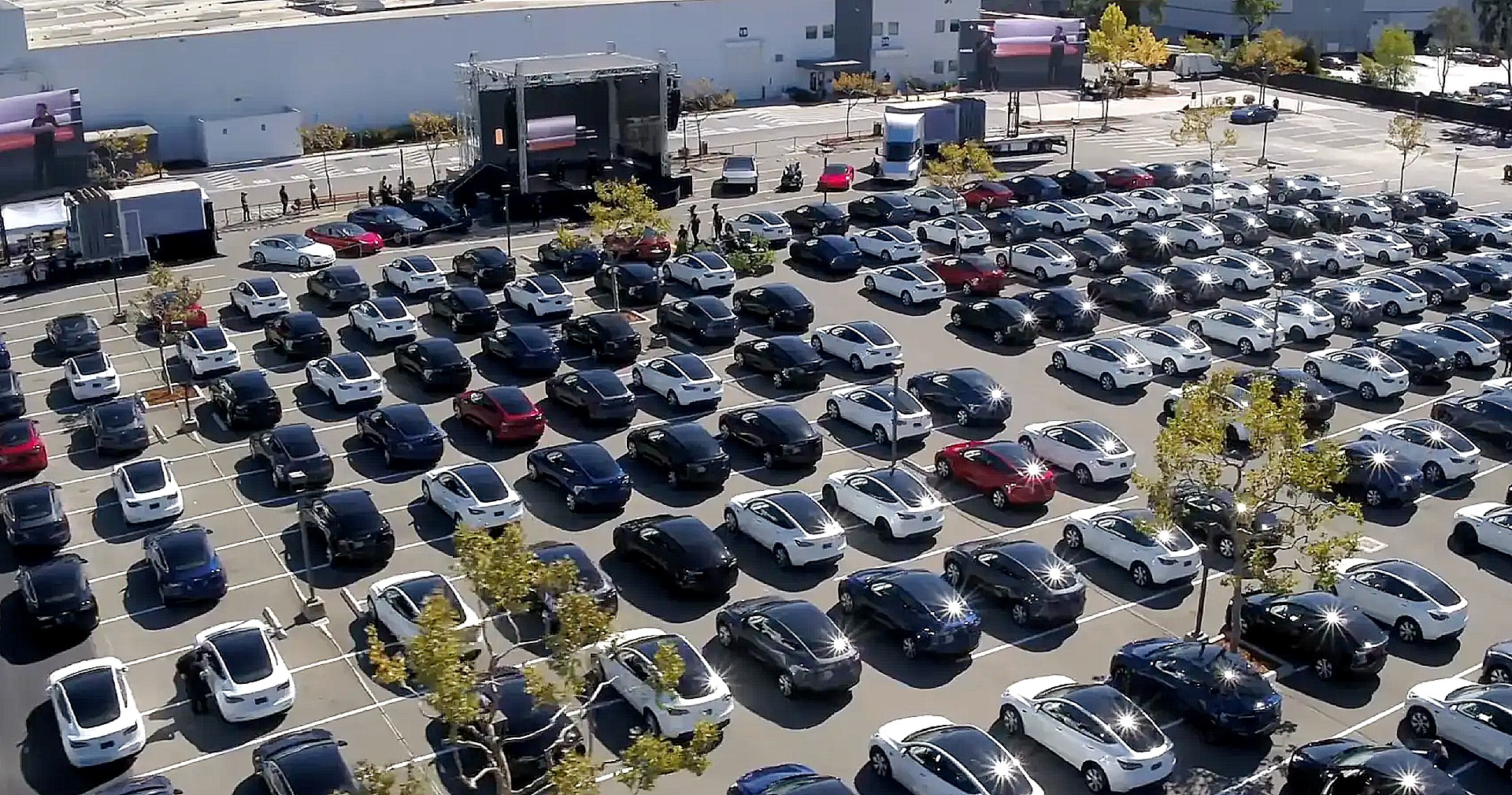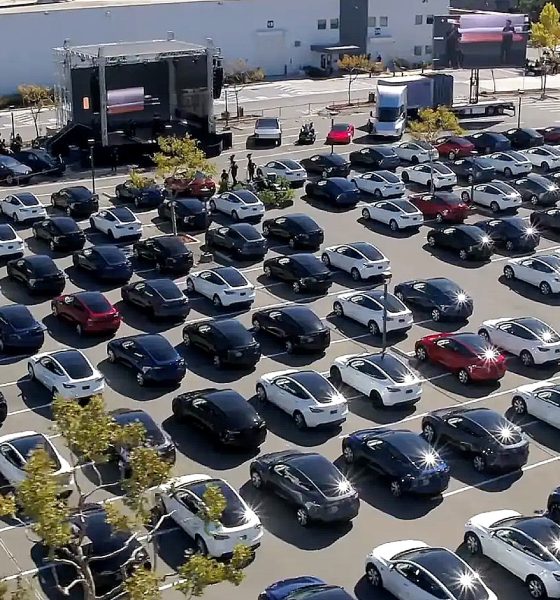Tesla released a thank you video to the people that helped the company achieve tremendous achievements in 2020 amid the Coronavirus pandemic.
Last year was not easy for everyone, with lockdowns and community quarantines being implemented across the globe. Given how chaotic 2020 was, it might be difficult to recall everything that happened to Tesla.
Tesla’s thank you video names all the impressive milestones it passed despite the past year’s challenges. Below are some of the milestones listed in the video.
Tesla’s Automotive Division
- Giga Shanghai starts Made-in-China Model 3 deliveries at the beginning of 2020
- Tesla breaks ground on Giga Berlin
- Tesla produces its 1,000,000th vehicle
- US Model Y deliveries start in late Q1
- Tesla produces 102,672 vehicles and delivers 88,496 in Q1 2020
- Tesla implements proper Covid guidelines to reopen following a mandatory Covid shutdown
- Contactless deliveries were launched to make car purchases safer and easier despite the pandemic
- Model Y deliveries begin in Canada
- Tesla Model S becomes first production electric car with a 400-mile range
- Tesla produces 82,272 vehicles and delivers 90,891 in Q2 2020
- Tesla announces Gigafactory Texas
- Tesla Model S Plaid completes record 1.30.327 lap at Laguna Seca
- Tesla introduces custom 4680 cell during Battery Day and more
- Tesla produces 145,036 cars and delivers 139,593 in Q3 2020
- Giga Shanghai’s MIC Model 3 exports to Europe start
- Tesla releases Full Self-Driving beta to first batch of testers
- Tesla Supercharger Network grows up to 20,000 and counting
- Tesla delivers half a million cars by the end of 2020

Tesla Energy
- Giga New York builds Solar Roof for 1,000 homes in one week
- Tesla installs 100,000th Powerwall
- Tesla offers the lowest price for solar panels in America
- Tesla begins work on world’s largest Megapack project in Moss Landing, CA
- Tesla completes Powerpack battery expansion at the Hornsdale Power Reserve in Australia
TSLA shares
- Tesla declares five-for-one-stock split in Q3 to make TSLA more accessible for retail investors
- Tesla joins S&P 500 in Q4 2020
Each milestone could not have been achieved without the people behind Tesla, and the video seems to reflect that. Tesla seems adamant to keep its ball of success rolling in 2021.
This year started off with the announcement of the Tesla Plaid Model S and Plaid+ during the Q4 earnings call. Plaid Mode S deliveries are expected to start in the coming weeks. More Plaid Model S vehicles have been spotted in the Fremont Factory, hinting at possible late Q1 deliveries or early Q2 deliveries.
Giga Shanghai also announced the entrance of its locally-produced Model Y to the market. Deliveries started in early January. MIC Model 3 demand seems to be growing as well in Asia, particularly Japan. Tesla may also be looking into a project in India later this year.
Tesla’s 2020 thank you video to its employees could be accessed here.
Do you have anything to share with the Teslarati Team? We’d love to hear from you, email us at tips@teslarati.com or reach out to me at maria@teslarati.com.

Elon Musk
Elon Musk and Tesla AI Director share insights after empty driver seat Robotaxi rides
The executives’ unoccupied tests hint at the rapid progress of Tesla’s unsupervised Robotaxi efforts.

Tesla CEO Elon Musk and AI Director Ashok Elluswamy celebrated Christmas Eve by sharing personal experiences with Robotaxi vehicles that had no safety monitor or occupant in the driver’s seat. Musk described the system’s “perfect driving” around Austin, while Elluswamy posted video from the back seat, calling it “an amazing experience.”
The executives’ unoccupied tests hint at the rapid progress of Tesla’s unsupervised Robotaxi efforts.
Elon and Ashok’s firsthand Robotaxi insights
Prior to Musk and the Tesla AI Director’s posts, sightings of unmanned Teslas navigating public roads were widely shared on social media. One such vehicle was spotted in Austin, Texas, which Elon Musk acknowleged by stating that “Testing is underway with no occupants in the car.”
Based on his Christmas Eve post, Musk seemed to have tested an unmanned Tesla himself. “A Tesla with no safety monitor in the car and me sitting in the passenger seat took me all around Austin on Sunday with perfect driving,” Musk wrote in his post.
Elluswamy responded with a 2-minute video showing himself in the rear of an unmanned Tesla. The video featured the vehicle’s empty front seats, as well as its smooth handling through real-world traffic. He captioned his video with the words, “It’s an amazing experience!”
Towards Unsupervised operations
During an xAI Hackathon earlier this month, Elon Musk mentioned that Tesla owed be removing Safety Monitors from its Robotaxis in Austin in just three weeks. “Unsupervised is pretty much solved at this point. So there will be Tesla Robotaxis operating in Austin with no one in them. Not even anyone in the passenger seat in about three weeks,” he said. Musk echoed similar estimates at the 2025 Annual Shareholder Meeting and the Q3 2025 earnings call.
Considering the insights that were posted Musk and Elluswamy, it does appear that Tesla is working hard towards operating its Robotaxis with no safety monitors. This is quite impressive considering that the service was launched just earlier this year.
Elon Musk
Starlink passes 9 million active customers just weeks after hitting 8 million
The milestone highlights the accelerating growth of Starlink, which has now been adding over 20,000 new users per day.

SpaceX’s Starlink satellite internet service has continued its rapid global expansion, surpassing 9 million active customers just weeks after crossing the 8 million mark.
The milestone highlights the accelerating growth of Starlink, which has now been adding over 20,000 new users per day.
9 million customers
In a post on X, SpaceX stated that Starlink now serves over 9 million active users across 155 countries, territories, and markets. The company reached 8 million customers in early November, meaning it added roughly 1 million subscribers in under seven weeks, or about 21,275 new users on average per day.
“Starlink is connecting more than 9M active customers with high-speed internet across 155 countries, territories, and many other markets,” Starlink wrote in a post on its official X account. SpaceX President Gwynne Shotwell also celebrated the milestone on X. “A huge thank you to all of our customers and congrats to the Starlink team for such an incredible product,” she wrote.
That growth rate reflects both rising demand for broadband in underserved regions and Starlink’s expanding satellite constellation, which now includes more than 9,000 low-Earth-orbit satellites designed to deliver high-speed, low-latency internet worldwide.
Starlink’s momentum
Starlink’s momentum has been building up. SpaceX reported 4.6 million Starlink customers in December 2024, followed by 7 million by August 2025, and 8 million customers in November. Independent data also suggests Starlink usage is rising sharply, with Cloudflare reporting that global web traffic from Starlink users more than doubled in 2025, as noted in an Insider report.
Starlink’s momentum is increasingly tied to SpaceX’s broader financial outlook. Elon Musk has said the satellite network is “by far” the company’s largest revenue driver, and reports suggest SpaceX may be positioning itself for an initial public offering as soon as next year, with valuations estimated as high as $1.5 trillion. Musk has also suggested in the past that Starlink could have its own IPO in the future.
News
NVIDIA Director of Robotics: Tesla FSD v14 is the first AI to pass the “Physical Turing Test”
After testing FSD v14, Fan stated that his experience with FSD felt magical at first, but it soon started to feel like a routine.

NVIDIA Director of Robotics Jim Fan has praised Tesla’s Full Self-Driving (Supervised) v14 as the first AI to pass what he described as a “Physical Turing Test.”
After testing FSD v14, Fan stated that his experience with FSD felt magical at first, but it soon started to feel like a routine. And just like smartphones today, removing it now would “actively hurt.”
Jim Fan’s hands-on FSD v14 impressions
Fan, a leading researcher in embodied AI who is currently solving Physical AI at NVIDIA and spearheading the company’s Project GR00T initiative, noted that he actually was late to the Tesla game. He was, however, one of the first to try out FSD v14.
“I was very late to own a Tesla but among the earliest to try out FSD v14. It’s perhaps the first time I experience an AI that passes the Physical Turing Test: after a long day at work, you press a button, lay back, and couldn’t tell if a neural net or a human drove you home,” Fan wrote in a post on X.
Fan added: “Despite knowing exactly how robot learning works, I still find it magical watching the steering wheel turn by itself. First it feels surreal, next it becomes routine. Then, like the smartphone, taking it away actively hurts. This is how humanity gets rewired and glued to god-like technologies.”
The Physical Turing Test
The original Turing Test was conceived by Alan Turing in 1950, and it was aimed at determining if a machine could exhibit behavior that is equivalent to or indistinguishable from a human. By focusing on text-based conversations, the original Turing Test set a high bar for natural language processing and machine learning.
This test has been passed by today’s large language models. However, the capability to converse in a humanlike manner is a completely different challenge from performing real-world problem-solving or physical interactions. Thus, Fan introduced the Physical Turing Test, which challenges AI systems to demonstrate intelligence through physical actions.
Based on Fan’s comments, Tesla has demonstrated these intelligent physical actions with FSD v14. Elon Musk agreed with the NVIDIA executive, stating in a post on X that with FSD v14, “you can sense the sentience maturing.” Musk also praised Tesla AI, calling it the best “real-world AI” today.










